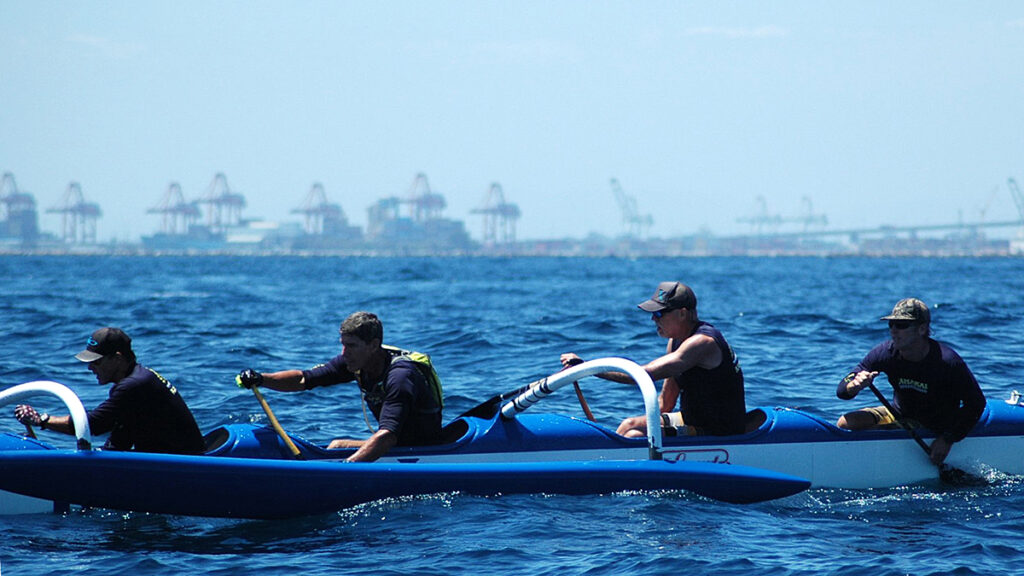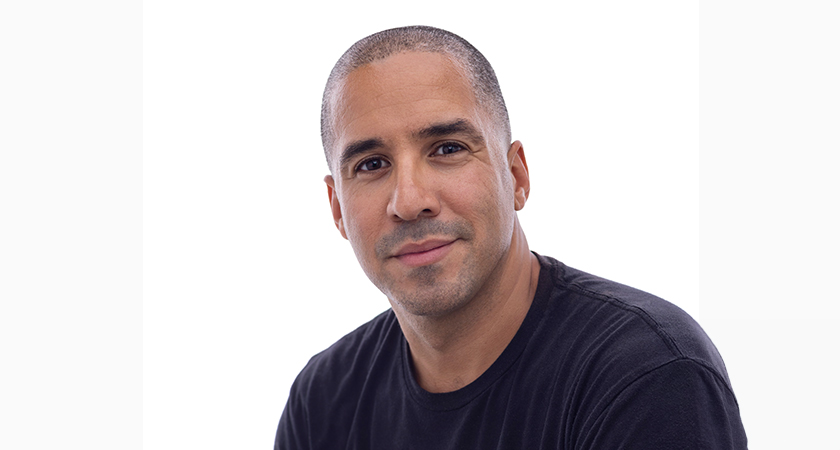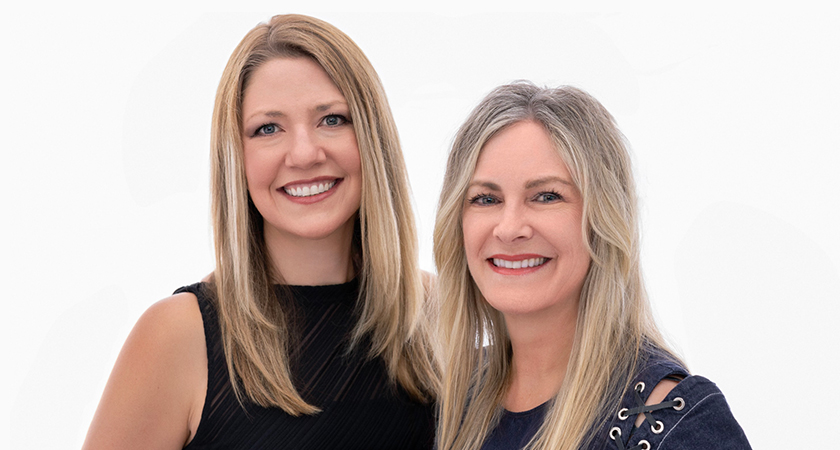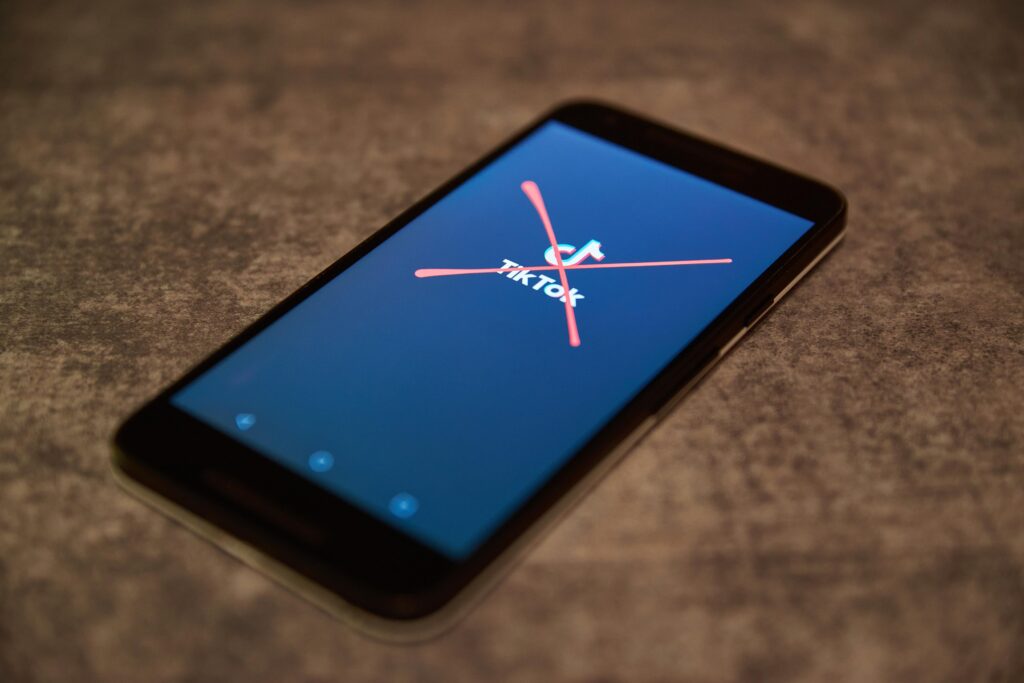About eight or nine years ago, while contemplating my navel, which was in the middle of an ever-expanding belly due to the sedentary nature of my work, I tried to think of ways to increase my physical activity. I grew up in and around the ocean, and I live near it, so something involving water seemed like a good fit. Some of my family had been outrigger paddling for several years. So I decided to give it a shot with one of the local clubs near me, and have been paddling ever since, both individually in a one-man canoe, as well as a crew member in six-man canoes.
Outrigger paddling originated in Polynesia as a means of transportation and exploration. The Polynesian people colonized islands throughout the Pacific using outrigger canoes, reaching places as distant as New Zealand (Aotearoa) to the south, Easter Island (Rapa Nui) to the east, Tahiti to the west, and Hawaii to the north. Today, it is practiced throughout the world as a recreational and competitive sport.
Typically, I paddle three to five days a week. During the week, a training session is usually a ten- to twelve-mile paddle. Weekends are in the twelve- to fifteen-mile range.
I also paddle competitively in races throughout Southern California. Paddlers from all over Southern California, Arizona, and other areas as far away as Tahiti get together to race in various classifications determined by sex, age, type of canoe (traditional versus nontraditional—nontraditional canoes being lighter and more high-tech), and distance.
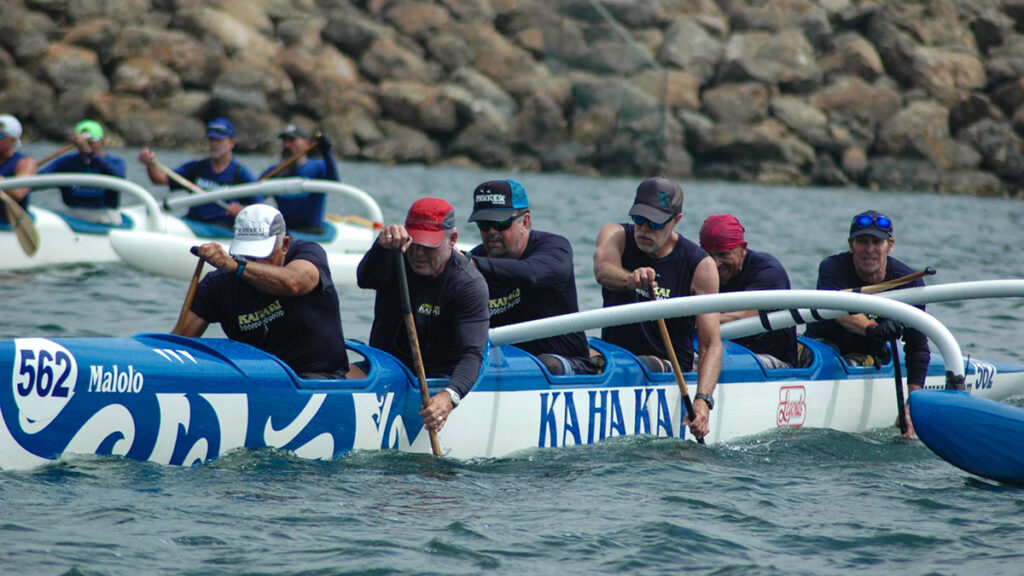
Q: How does each role affect the other? What is similar?
A: While one activity is far more physical, and the other more mental, there are many parallels between the two. Those similarities draw on one another, making me better at both. They both require working with others toward a similar goal, whether that be to produce the best campaign possible or to perform in a race at the highest level possible with the group of people you’re a part of. Both require teamwork, patience, sacrifice, diplomacy, coordination, and knowing your role.
In a six-man outrigger canoe, the paddlers sit in a line from front to back. Each seat has a distinct role to play. Seat 1 sets the style, rhythm, and stroke rate for the canoe. Seat 2 mirrors seat 1 so that both sides of the canoe work together. Seat 3 is a power seat and part of the engine room of the canoe. They also usually call out “changes,” letting paddlers know when to switch paddling from one side of the canoe to the other. Seat 4 is also a power seat. Seat 5 is an integral member of the powerhouse but also has the best view of the canoe and can monitor the timing of the paddlers. Seat 6 is the steerer who motivates the crew, providing positivity, direction, and feedback. I usually paddle in seats 3 or 4, but paddle in seats 1, 2, and 5 as well. Learning to steer a canoe is one of my goals for the future.
Working in advertising also requires that one work as part of a team. That team usually consists of many more than six people, and includes those working in a variety of disciplines—account, data and analytics, project management, creative, production, media, and more. Each discipline usually has its own internal teams, but in a manner similar to paddling, everyone needs to know their role and place in the process in order that the team as a whole succeeds.
Both roles are also highly technical. So, the learning process is never-ending. In paddling, that may be learning to better read the ocean, refine your paddle technique, or better blend with your crew. In my work, that could be learning the latest design and advertising trends, how to better use data to inform and/or target a campaign, or updating or learning new software and technical skills that are constantly changing and ever-evolving.
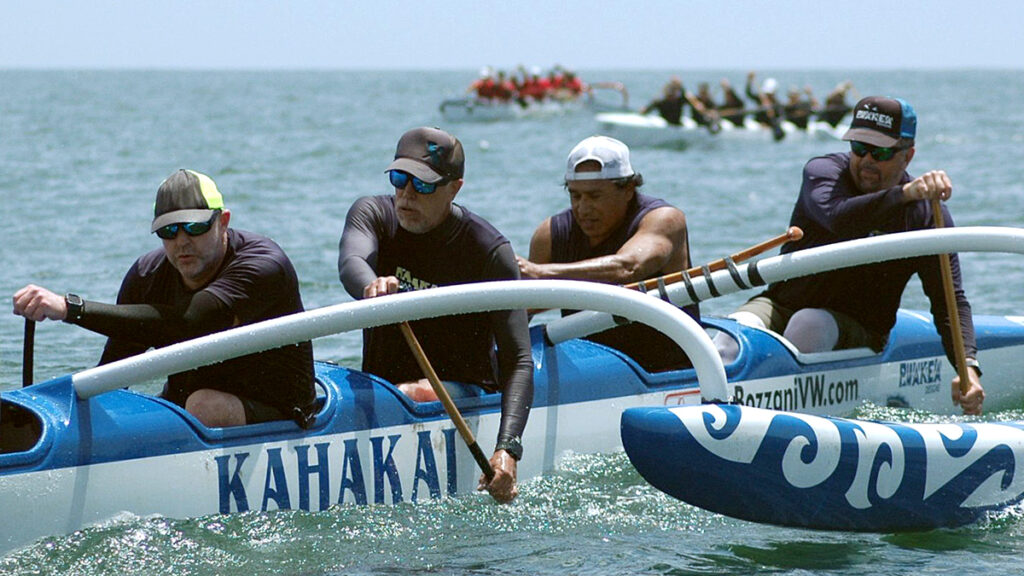
Q: What’s inspiring you today in your work and personal projects?
A: The inspiration for my paddling comes from many fronts—my coaches, teammates, and fellow paddlers, but also from those at the highest level of the sport, which consists of elite paddlers from all over the world, with the very best undoubtedly coming from Tahiti, where outrigger canoeing is the national sport on a level akin to football in the U.S.
As regards to the inspiration for my design work, that comes from a variety of disparate areas, everything from the visual arts—graphic design, art, architecture, animation, film, and photography—but also from literature, music, and philosophy. There are, of course, many designers whose work I admire and try to take inspiration from.
Q: Where can we check out your personal work?
A: I have a website, although it hasn’t been updated in awhile, christopherposthuma.com. If you’re interested in outrigger paddling, the local organization is SCORA (Southern California Outrigger Racing Association), scora.org, and there you can find links to clubs throughout Southern California. Most clubs allow you to come try out the sport for a limited time before joining, and will offer instruction and lend you a paddle to get you started to see if the sport is for you.
